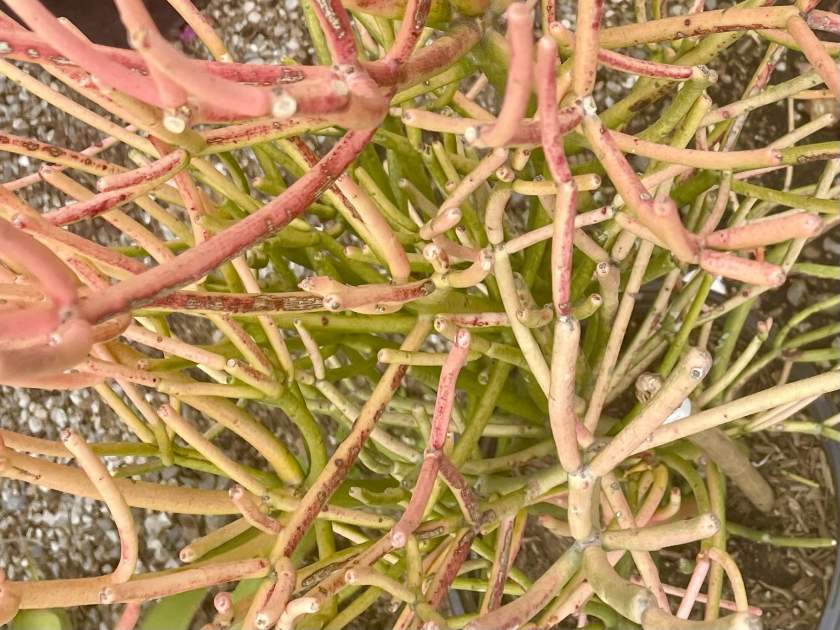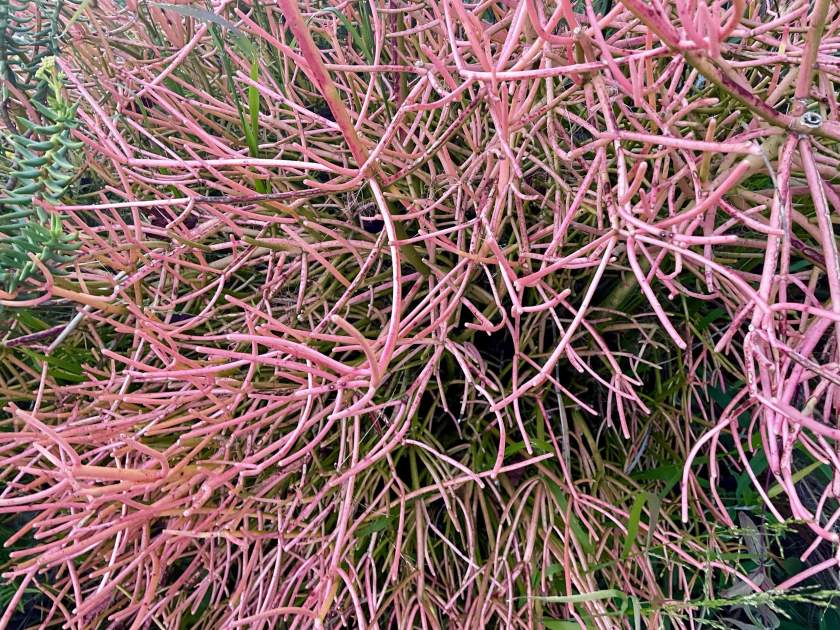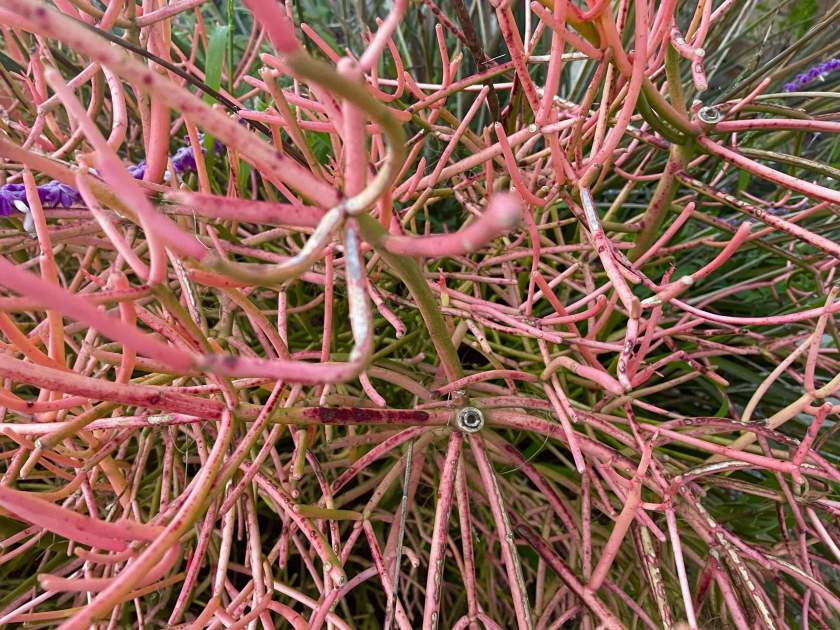Euphorbia tirucalli, commonly known as Indian Tree Spurge, Pencil Tree, Pencil Cactus, Fire Stick, Sticks on Fire, Aveloz, or Milk Bush, is a fascinating tree native to Africa (Madagascar) that thrives in semi-arid tropical climates. This unique plant, classified as a succulent, has a thick, woody stem that can reach heights of up to 30 feet. Its leaves are small and ephemeral, quickly falling off and leaving the stem bare. The flowers, often green or yellow, are diminutive and hold little significance.
Renowned for its striking appearance, Euphorbia tirucalli is a beloved ornamental plant in tropical and subtropical regions. It also serves practical purposes, commonly used as a hedge plant and as a source of wood. However, it is essential to exercise caution when handling this plant due to its hydrocarbon nature. Euphorbia tirucalli produces toxic latex that can cause temporary blindness if it comes into contact with the eyes.
Belonging to the Euphorbiaceae family, which boasts over 7,500 species, Euphorbia tirucalli shares its lineage with well-known plants like Poinsettias, Cassava, and Rubber Trees. Although indigenous to Africa, it has been widely cultivated in tropical and subtropical regions worldwide.

How to grow Euphorbia tirucalli:
For optimal growth, this plant thrives in full sun and well-drained soil. Caring for Euphorbia tirucalli is relatively straightforward. Regular watering is necessary, but caution should be exercised to avoid overwatering, as this can harm the plant. During the growing season, monthly fertilization will help promote healthy growth. It is important to note that Euphorbia tirucalli is a toxic plant. Its sap can cause skin irritation, eye irritation, and vomiting if ingested. Therefore, it is advisable to wear gloves when handling the plant to minimize contact with the latex.
Disease and Pest Control:
Euphorbia tirucalli is generally a resilient plant, but it can occasionally be susceptible to certain pests and diseases. Mealybugs and spider mites are common pests that may infest the plant. Regularly inspect the leaves and stems for any signs of infestation, such as webbing, small insects, or yellowing foliage. If pests are detected, it is recommended to use an appropriate insecticidal soap or neem oil spray to control the infestation. Be sure to follow the instructions provided on the product label.
Propagating Euphorbia tirucalli:
Euphorbia tirucalli can be propagated through stem cuttings. To propagate the plant, carefully take a cutting from a healthy stem using a clean, sharp knife or shears. Allow the cutting to dry and callus for a few days before placing it in well-draining soil. It is important to avoid direct sunlight during the initial rooting process. Keep the soil lightly moist, and within a few weeks, new roots should begin to develop. Once the cutting has established roots, it can be treated like a mature Euphorbia tirucalli plant.
Winter Care:
While Euphorbia tirucalli thrives in warm climates, it is sensitive to frost and colder temperatures. If you live in a region with cold winters, it is advisable to protect the plant from frost by bringing it indoors or providing a frost cover. Place it in a location with ample sunlight, such as near a south-facing window, and ensure proper ventilation to prevent stagnant air and excessive humidity.
Pruning:
Euphorbia tirucalli can be pruned to maintain its desired shape and size. Pruning is typically done in early spring before new growth begins. Use clean, sharp pruning shears to remove any dead, damaged, or overgrown branches. Take care when pruning, as the milky latex sap can cause skin irritation. It is recommended to wear protective gloves and clothing and to avoid contact with the eyes and mouth.
In summary, Euphorbia tirucalli is a captivating succulent tree with a distinctive appearance and a few notable names. It has become a cherished ornamental plant and is frequently employed as a hedge. While caring for this plant, remember to water it regularly without overdoing it, fertilize it monthly during the growing season, and take precautions to protect yourself when handling its toxic sap. By following these guidelines, you can enjoy the beauty of Euphorbia tirucalli in your tropical or subtropical garden.





